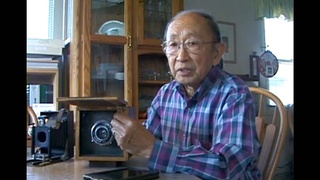Interviews
Keeping Japanese Performance Arts Alive in the Camps
My mother made friends with a lot of artists, who were dancers and teachers, and so that’s when I began to take Japanese odori, playing the shamisen, doing nagauta, I guess, and I loved it. I mean, I really enjoyed it. I think that if it weren’t for those camp days, I wouldn’t have been interested in the arts or acting. What I really loved was doing kabuki plays. I didn’t understand a word that I was saying, my mother would tell me what the words were, what they meant, and then I would just memorize it. I could read it in katakana, so she would write out the words in katakana, and my favorite was playing Hichidameno Okaru. Well, I remember one line, and it still gives me pleasure because it’s different. It would be “ura-san ka, watasha omae ni moritsubu-sare,” you know, very overly dramatic.
Date: November 8, 2018
Location: California, US
Interviewer: June Berk
Contributed by: Watase Media Arts Center, Japanese American National Museum











